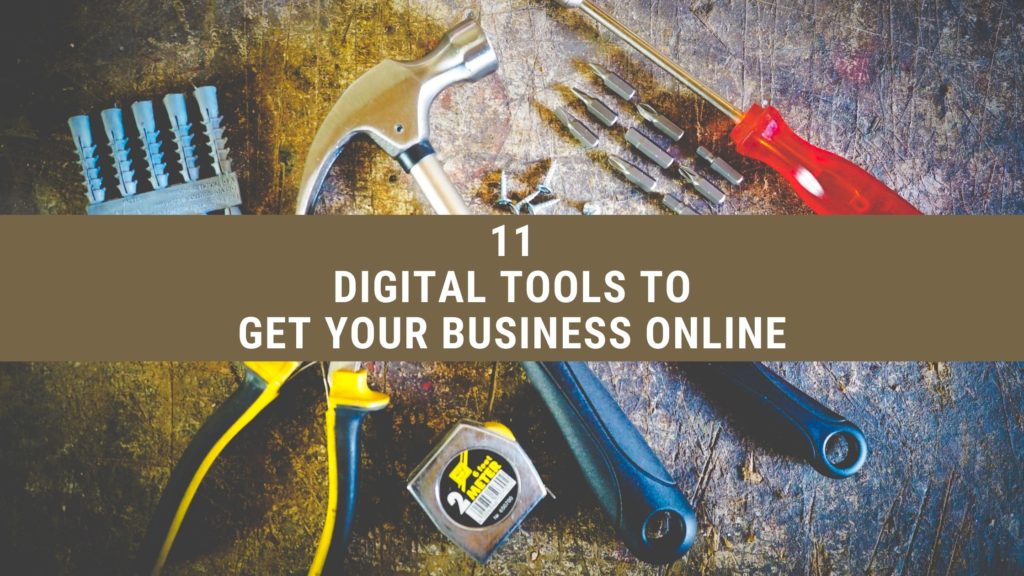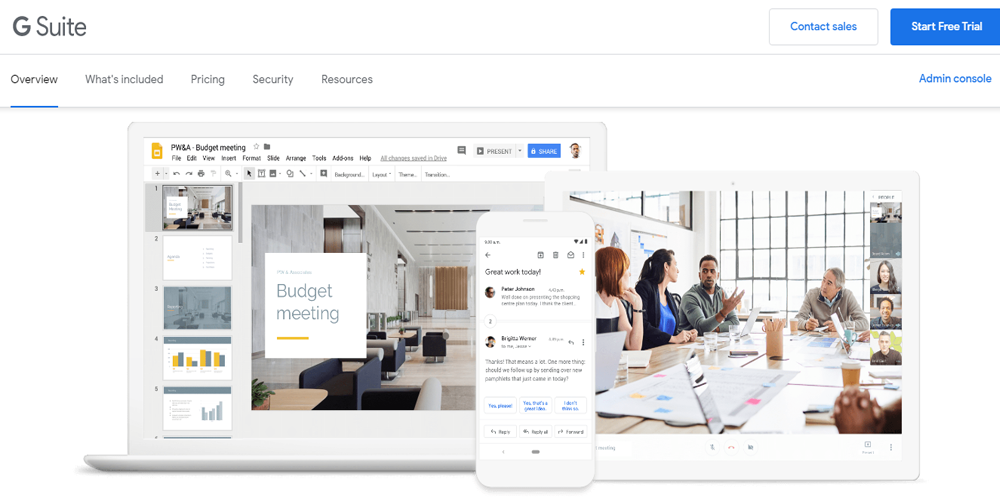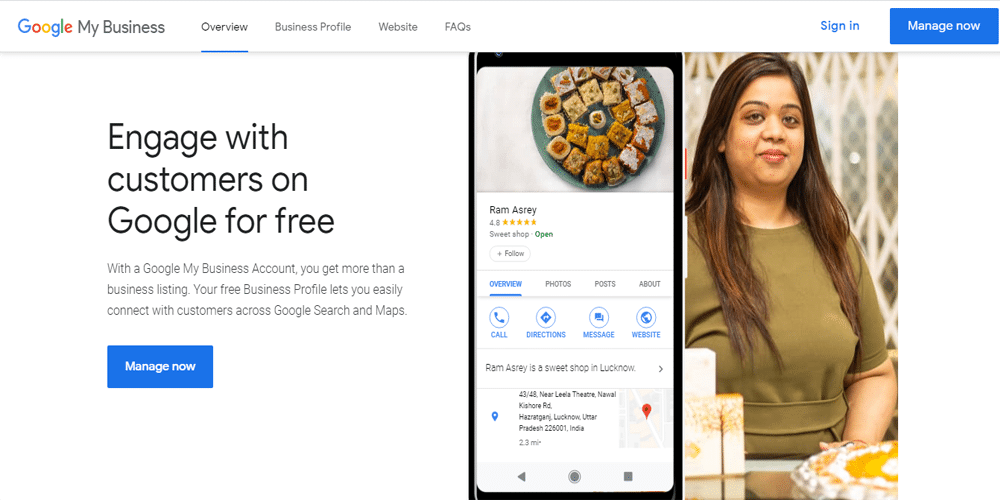11 Digital Tools to Get Your Business Online

In this post, we will discuss about 11 digital tools that will help you to get your business online.
Business leaders need to adapt all the time to keep their business successful. Getting your business online is a big challenge. But this challenge can be simplified a lot with the use of these digital tools.
- A helpful website
- G-suite
- A Blog
- Contact Us page with Thank You page
- Search console
- Google Analytics
- Google My Business
- Social Media Channels
- YouTube Channel
- Google Trends
- Paid Advertising
Now let us analyze all these tools.
- Create a Helpful Website – Help Customers to Find You
This is the first and major requirement for taking your business online. Your website is your online shop or office. You should share accurate and valuable information about your products or services on your website. That information should also help and persuade your website visitors to become your paying customer.
Three major points to consider when you build your website;
(i) The domain name or website address.
Try to choose a domain name that is related to your business or service. Use keywords in your domain name. Use a short domain name which will be easy to pronounce and easy to remember.
Try to avoid domain names that have numbers in it. Avoid misspellings; your prospect may land on a competitor website.
(ii) Hosting service
Choose a hosting provider with a good reputation. Compare prices and select a service that offers SSL. This will ensure complete security to the data that you collect on your site. This will help you to improve your trust factor and also help you to protect the privacy of your website visitors. With this added security, you can get your business online with confidence.
(iii) The platform that you use to develop your website
Use a flexible platform to develop your website. If you are planning to create an ecommerce website, Shopify will be an excellent option. And if you are planning to create a website rich with content, then WordPress will be an excellent option.
Both Shopify and WordPress offers thousands of plugins, so customizing your website will be very easy. You can easily add new features to your website. Adding enhancements for new business requirements will be easy too.
And the best part; a lot of these plugins are free.
- G Suite – For Better Communication and Collaboration

As a business owner, you should have a branded and personalised business email address. Check G-Suite. It is a great solution and it offers affordable options to businesses of all sizes.
With G-suit you will get access to a lot of collaboration and productivity apps in Google Drive. Like Google docs, slides, sheets, forms, calendar, chat and meet. You will also get cloud storage with Google Drive and great data security provided by Google.
These additional tools will be a tremendous help to get your business online.
- Include a Blog on Your Site – Attract Your Customers with Engaging Content
A blog is a great tool to publish valuable content for your potential customers. By publishing valuable and original content you can reach and inspire a lot of your target audience. You will be able to share your ideas with a highly engaged audience.
Get your business online with a well planned content strategy. This is very important during the initial days of your online transformation.
And chances are high that a lot of these people who already know about your business through the content on your blog can become your loyal customers too!
Ask your web developer to include a blog on you site during the initial discussions. This will make their job much easier. Sometime integrating a blog after creating the initial site will be tedious and requires additional work. This can also increase your web development cost. Planning for a blog in advance will help you to avoid these complications.
- An easy to find Contact Us and a Thank You page – Help Your Customers to Contact You with Ease
If you want to grow your business, then you must help your potential customers to contact you easily.
A ‘Contact Us’ page is normally one of the default pages in a website setup. There is no need to separately discuss it. But we are discussing it here because of two important components that come with a Contact Us page.
The enquiry form and ‘thank you’ page.
Include your accurate business address on your contact page. Adding just a post box number is not enough. Share your phone number on your contact page. But remember one thing; not every potential customer will be willing to immediately connect with you over phone. They need an additional contact option to connect with you.
There should be a short form to collect user data on your contact us page.
The data collection form on your contact us page must be short, with less number of fields. Collect only the essential information needed. You can always ask more questions later when you contact those potential customers. Long forms will put-off a lot of users from filling it.
The next important element is a ‘Thank You’ page.
This page should load after a potential customer fill up the form on your contact page, with a ‘Thank You for Contacting Us’ message.

During the web development phase, ask your developer to create a separate ‘Thank You’ page for your contact us forms. Many contact form plugins uses an Inline thank you message instead of using a thank you page. But you should insist on a separate thank you page that loads after the form submission.
And now the important question – Why do you need a separate thank you page?
You can use your thank you page to track your website performance! In Google analytics you can create destination ‘goals’ to track how many people fill your form and reached your thank you page.
This will help you to track how many people actually contacted you and which traffic driving channel is bring in these customers to your website. This information will help you to improve your traffic generation and marketing activities.
You can also add the conversion tracking codes of your paid marketing campaigns (Google Ads, Facebook ads and more) on your thank you page to accurately track campaign performance and measure ROI.
- Search Console – Optimize Your Site Traffic
Search console is a free service offered by Google to help you to monitor your site’s presence in Google search. Using search console you can submit your website sitemap to Google. This will help Google to easily understand the important pages of your website and index them properly.
The site performance reports in search console will help you to analyse, troubleshoot and optimize your site’s performance in search.
You will get answers to questions like how many people saw your site in search results, how many clicked on those results and visited your website. You will also get reports on the search queries used by those visitors, the countries from where those visitors came, which device they used and more.
All these information will help you to optimize your website.
Find more information about Search Console here.
- Google Analytics – Measure Your Website Traffic

This is another free tool from Google to help you get your business online.
Google Analytics will help you to track user behaviour on your website. This is a great tool to measure traffic patterns and optimize your website and digital marketing efforts.
Understanding your customers is the most important part in growing your business.
In Google Analytics, you will get detailed reports about multiple aspects of user behaviour on you site. You can easily find how many people visits your website, how many people returns to your site after the first visit, from which country they are coming. You will also know how they found your website, how many of them purchased your products, or used a lead generation form to contact you and more.
Setting Goals in your Google Analytic account will help you to accurately track customer interactions like sale or number of leads generated. This measurement is crucial to understand which traffic channel (organic, paid, social media, referral etc) is driving qualified visitors to your website. And how many of those visitors are converting to paying customers.
All these information will help you to make informed decisions about your business offers, advertising messages and marketing efforts.
Sign-up for Google Analytics here.
- Google My Business – Free Business Listing on Google to Get Your Business Online

One more free tool from Google to help business owners to create their digital footprint on Google.
Using a Google My Business (GMB) account, businesses can create free business listing on Google. This will help your customers to easily find you on Google search and maps.
A GMB listing comes with a lot of information about the specific business. You can include your address/location (this will help your customers to easily reach you using Google maps app) phone number, opening hours, website link and more.
You can also use services section in the GMB listing to list your services. When people search for the services or products that you are providing using a mobile device, your listing will be displayed in front of them. This will help you to attract more customers to your business from nearby locations.
You can also use positive GMB reviews from customers to build trust in your business. This is an area which needs constant attention. Regularly respond to reviews. Give special attention to negative reviews. Learn from them and respond to them in a professional manner.
You can also create location extensions in Google Ads by linking your GMB account with your Google Ads account.
You can access Google My Business here.
- Social Media Channels – Engage Your Customers Socially
Social media is a great tool to engage with your customers in a more casual manner and drive them to your business.
You just need to select the right social media platform to engage with your potential customers. Facebook is suitable for almost any type of business. But if you are looking for a target audience of business owners and business decision makers, then LinkedIn will be a good fit. If you are running a business where images are a good medium to engage your customers, then use Pinterest or Instagram.
- YouTube Channel – Get Your Customer’s Attention with Sound, Visuals and Movement.
Video is now a major part of content that is consumed everyday by customers. Videos help them with their purchase decisions.
Seeing videos created by your business makes them more likely to buy from you. Video content can create trust.
Rather than reading, now people are more interested to watch a video to learn more about a product or service. You can create product demo videos. Create videos with tactical advice on how your service can help your customers. You can create explainer videos and use it on your landing pages.
Create a YouTube channel for your business. Creating a YouTube channel with engaging high quality videos will help you to get in touch with customers at a personal level. This will help you to establish your business as a though leader in front of your most potential customers.
You can also create and run video ads on YouTube and the entire Google display network. With strategic video ad campaigns you can reach a much larger and engaged target audience!
- Google Trends – Find Market Trends
Google Trends is a website where you can analyse the current trends of search queries or keywords.

This is an amazing tool where you can easily find current market trends of terms or keywords related to your service or product. Examining these data points will help you to understand present market conditions and make corrective actions if needed.
This tool can also be used to find emerging trends, which can be used to find hidden opportunities to grow your business.
- Paid Advertising – For Fast Results
If you need to quickly drive high quality web traffic to your business website, then the best option will be paid adverting.
You can run your paid ads on search engines (Google Ads and Microsoft Advertising) and social media (Facebook, Twitter, LinkedIn and more). With the precise targeting options provided by these platforms, you can reach your most potential customer online.
You can use various ad formats suitable to reach your target audience. And you will have complete control on how much you want to spend on your ads. To know more about advantages of PPC (Pay Per Click) ads, check this blog post.
With accurate conversion tracking you will be able to find which platform is giving you the best return on investment. This will help you to use your advertising budget more efficiently to grow your business.
